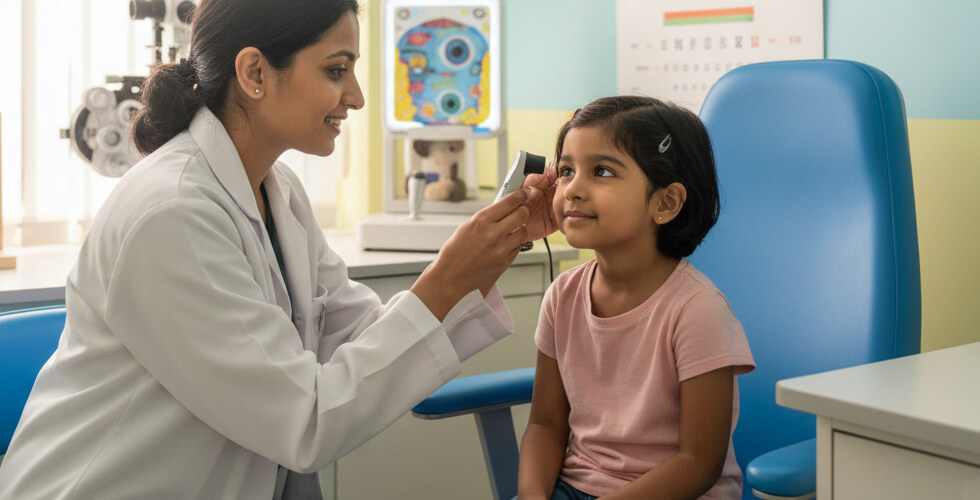In today’s digital world, mobiles, tablets, online classes, video games, and OTT platforms have become routine for children. While technology helps them learn and stay entertained, excessive screen time can harm their eyes, leading to a condition called Computer Vision Syndrome (CVS) or Digital Eye Strain.
Children are more at risk because their eyes are still developing and they don’t realise how long they’ve been staring at the screen.
How Do Parents Know Something Is Wrong? – Symptoms to Watch For
Parents should look out for the following warning signs:
- Frequent blinking or rubbing of the eyes
- Dryness or watery eyes
- Redness, burning, or itching sensation
- Complaints of headache or heaviness in the eyes
- Difficulty in focusing or blurred vision (especially after screen use)
- Squinting or squeezing eyes while watching screens or reading
- Holding a mobile/tablet very close to the eyes
- Neck/shoulder pain due to poor posture
- Irritability, short attention span, and avoiding studies or outdoor play
Clinically, this may be due to asthenopia (eye strain), accommodative spasm, or early myopia (number increasing).
What is Computer Vision Syndrome (CVS)?
Computer Vision Syndrome is a group of eye and vision-related problems caused by prolonged digital screen use.
Why does it happen?
- Children blink 60% less while watching screens → leads to tear film instability & dryness
- Blue light from screens can cause eye strain and affect sleep cycles
- Continuous near work stresses the eye muscles, leading to accommodation fatigue
- Poor posture → neck and shoulder strain
- Excessive screen time is directly linked to increasing myopia (power of glasses) in children
Treatment – When Should You See an Eye Doctor?
You should visit an eye specialist if symptoms persist for more than a week. An eye doctor may suggest:
- Cycloplegic refraction to check the correct eye power
- Lubricating eye drops (preservative-free) for dryness
- Anti-fatigue or blue-light filter glasses – may help some children, but should be prescribed only after proper examination
- Vision therapy or eye exercises if there is accommodative spasm or convergence weakness
- Treatment of squint or amblyopia (lazy eye) if detected early
Tips to Protect Your Child’s Eyes from Screen Damage
- Follow the 20-20-20 Rule.
- Every 20 minutes, take a 20-second break, and look at something 20 feet away.
- Limit Screen Time as per Age (WHO/AAP Guidelines)
- Maintain Proper Screen Distance & Posture
- Mobile/tab should be at arm’s length (18–24 inches)
- Screen should be at or slightly below eye level
- Child should sit on a chair with back support, not lying down
- Encourage Outdoor Play – Best Protection Against Myopia
- At least 2 hours of outdoor activity daily
- Sunlight helps in healthy eye growth and delays eye number increase
- Blinking Exercises & Artificial Tears (if advised)
- Teach children to blink consciously while using screens.
- Use teardrops only if prescribed.
- Reduce Blue Light Exposure
- Turn on ‘Night Mode’ / ‘Eye Comfort Mode’ on devices
- Avoid screens 1 hour before bedtime to improve sleep quality
Conclusion
Screens are a part of modern life, but uncontrolled screen time can silently damage children’s eyes. The solution is not avoiding technology, but using it wisely and responsibly.
Early eye check-ups, healthy screen habits, and outdoor activities can protect your child’s vision today and for the future.
At Khairabad Eye Hospital & Mahendra Eye Institute, we are committed to protecting and preserving children’s eyesight with advanced care and compassionate guidance.


